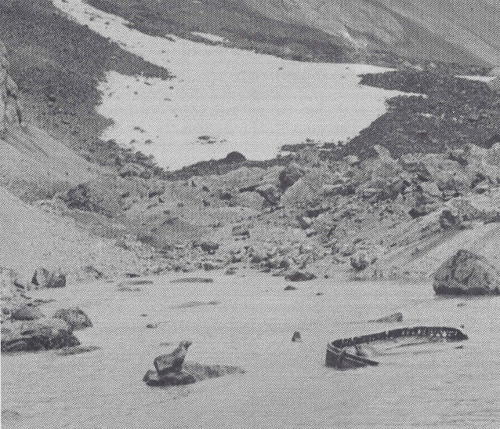
In 1964 British meteorologist Allan Crawford visited tiny, freezing Bouvet Island in the South Atlantic, the most remote island in the world, to investigate the possibility of establishing a weather station there. When his helicopter touched down near a shallow lagoon in the island’s interior he found a surprise:
There was an abandoned whaleboat in quite good condition, though lying at the bottom of the lagoon, gunwales awash. What drama, we wondered, was attached to this strange discovery? There were no markings to identify its origin or nationality. On the rocks a hundred yards away was a forty-four gallon drum and a pair of oars, with pieces of wood and a copper flotation or buoyancy tank opened out flat for some purpose.
Thinking that castaways might have landed on the uninhabited island, Crawford’s party made a brief search but found no human remains. The boat’s presence has never been explained.
(From Crawford’s book Tristan da Cunha and the Roaring Forties, 1982.)
